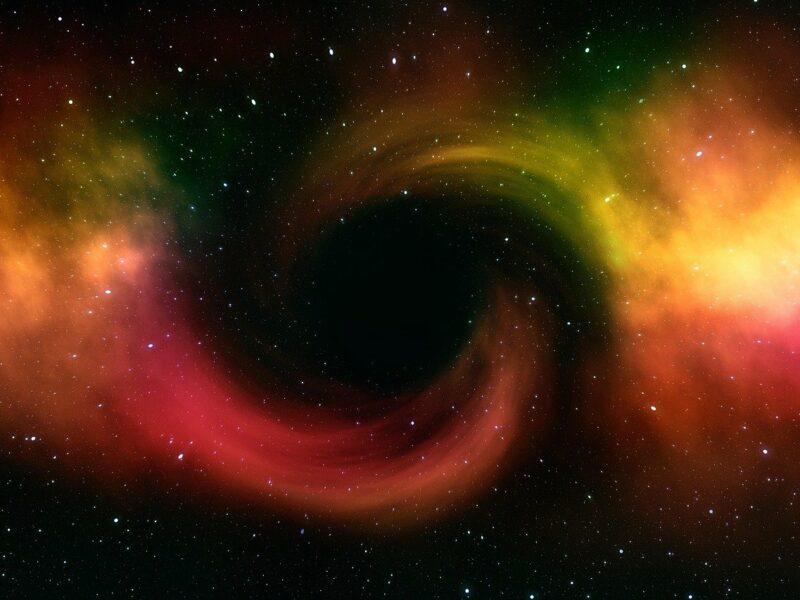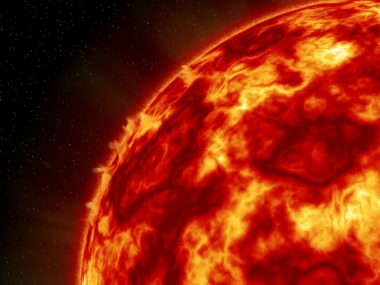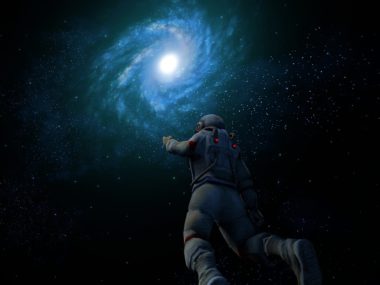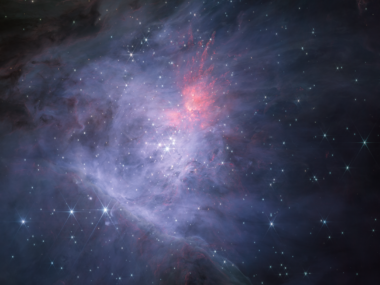What is Dark Matter?
You may have heard the claim that we don’t know what 99% of the universe is made up of. What’s that all about?
Dark matter is thought today to be a major constituent of the universe; astronomers believe dark matter comprises 85% of the stuff of the universe. Even though it makes up most of the universe, we don’t yet know what dark matter is. It’s hypothesized to be an entirely new form of matter. This different form of matter doesn’t interact with electromagnetic radiation—light—hence the name “dark”. We can’t see dark matter; so far, we can only detect it through its gravitational effects. It was the discovery of unusual motions in galaxies that led to the idea of dark matter, as we will now see.
The following is a summary of “How Should Recent Creationists Respond to Dark Matter and Dark Energy?” by Dr. Danny Faulkner, and of the research pertaining to it. The views expressed are not necessarily those of New Creation.
Lighted Mass vs. Dynamic Mass
How do you weigh a galaxy? You put it on a scale, of course. Aside from that, there are two (more practical) ways of determining the mass of a galaxy. The first is by its “lighted mass,” or, the amount of mass required to produce the light observed from a given galaxy. Astronomers have developed a light-to-mass ratio by which we can determine the mass of a galaxy by its intrinsic brightness (luminosity). Light in this context refers to the whole of the electromagnetic spectrum, not just visible light.
The second way to determine the mass of a galaxy is by “dynamic mass:” the mass required to account for the rotational motion of the galaxy. The velocity of a galaxy—its speed and direction of motion—is related to its mass. So by measuring the rotational motion of a galaxy, we can infer its mass.
We would expect measurements of galactic mass from these two methods to be consistent with each other; in other words, visual detection of galaxies should match with detection by their gravitational effects. But it turns out this isn’t always the case.
Dispersion Velocities of Galaxy Clusters
This discrepancy between lighted mass and dynamic mass was first discovered in the 1930s by astronomers studying the Coma Cluster. Astronomers could measure the velocities of galaxies within the cluster using Doppler motion. Assuming these motions were orbital, astronomers used the velocities of galaxies within the cluster to determine the mass within the cluster. This method of determining the mass of the Coma Cluster gave a value much higher than the value determined using the light-mass ratio.
Rotation Velocities of Spiral Galaxies
In the case of galaxies, we know that the rotational speed within a galaxy is related to the mass of the galaxy. In the nucleus of the galaxy, there is a linear relationship between rotational velocity and mass; the rotational velocity increases as the mass within the orbit increases. This is because the nucleus of the galaxy is of sufficient density such that it behaves as a single rotating object – as you move farther out from the center, the speed increases.
Keplerian Expectations for Outer Regions
For the outer regions of the galaxy, where lighted matter is far less dense, it was expected that rotational velocity would drop off. This is because stars and nebulae in the outer regions of the galaxy are spaced sufficiently far apart from one another, that instead of behaving as a single mass (like the nucleus of the galaxy), they behave as distinct objects orbiting around a central mass. For objects orbiting around a central mass, orbital speed is inversely proportional to orbital distance. This is the same relationship that defines the orbital speed of the planets around the Sun. Because of this, the relationship of velocity to distance from the galactic nucleus is called Keplerian behavior (after Kepler’s laws of planetary motion). As we look at the outer regions of the galaxy, where matter is not as densely distributed, we would expect matter to behave more like planets revolving around a central, localized mass (the nucleus of the galaxy) rather than as part of the nucleus itself.
Unexpected Observations in Galactic Rotation
Initial measurements of radial velocity of galaxies was limited to the inner galactic regions, since the technology to measure the very faint edges of the galaxies wasn’t available yet. These measurements were consistent with the motions we would expect, given the light distribution within the galaxies. But as astronomers began taking measurements of radial velocity at the edges of galaxies in the 1940s, they found that orbital velocities were much higher than expected by the distribution of lighted mass. And velocity never did approach Keplerian behavior either. Instead, the galaxy acted as though it was much denser than it appeared visually.
Evidence from Other Measurements
This same discrepancy between lighted mass and dynamic mass has been measured by other, independent means. Galaxies within galaxy clusters have been found to have Doppler velocities that exceed what the lighted mass of the galaxies would suggest. The gravitational lensing effects of galaxy clusters indicates greater density in the cluster than is apparent from its luminosity.
Gravitational Lensing
Another line of evidence for dark matter comes from gravitational lensing. Gravitational lensing occurs when a massive object in space distorts light from more distant objects in our line of sight. It’s a similar effect to the way light refracts in water or a lens. But this is due to the gravity of the object bending the rays of light. The amount of distortion produced by an object allows us to calculate its mass. This is dynamic mass measurement again, like the mass measurement derived from the motion of a galaxy. And, like with galaxies, it turns out that galaxy clusters consistently show a discrepancy between the mass inferred from the amount of gravitational lensing produced, and the lighted mass of the cluster.

This picture is a good example of this phenomenon. The bright yellow objects in the photograph are members of a relatively nearby galaxy cluster. The blue arcs that curve around the center are gravitationally lensed images of more distant galaxies. When astronomers model the observed lensing to determine the amount of mass required to produce this effect, the total inferred mass is 5 to 10 times greater than the visible mass of the galaxy cluster. Take a look at the same photo, with a gravity map superimposed on it, showing the mass distribution required to produce the gravitational lensing of the more distant galaxies.
Creationist Responses to Dark Matter
There has been much resistance to the concept of dark matter in young-earth creationist circles. Of course, this idea was initially met with resistance by conventional astronomers as well, so perhaps this shouldn’t be surprising. But in creationist circles, there is an impression that dark matter was invented by Big Bang theorists to support their cosmology. Is this the case?
Is Dark Matter a “Crutch” for the Big Bang?
One common claim among creationists is that dark matter was invented to salvage the Big Bang, or that it’s just a crutch for the Big Bang. It thus follows that if we can prove dark matter isn’t real, then we can destroy the Big Bang theory. However, the evidence for dark matter predates the Big Bang’s acceptance in the general astronomy community. As we’ve seen, dark matter was first proposed in the 1930s, while the Steady State theory, the precursor to the Big Bang, was still enjoying popularity. It wasn’t until the 1960s that the Big Bang became the dominant cosmology. Aside from the chronological issue, the evidence for dark matter doesn’t depend on the Big Bang, and is in fact independent of Big Bang model based assumptions.
Is Dark Matter a Relic of Outdated Physics?
Another way that some creationists try to account for the phenomena interpreted as evidence for dark matter is to suggest that modern physics needs major revisions. In particular, one revision that’s been brought forward is called modified Newtonian dynamics, or MOND, which does some tweaks on Newton’s second law of motion. The idea is that the unexpected data we’re observing isn’t due to a new form of matter, but rather to glitches in our understanding of physics.
The problem with this approach is that if these phenomena are due to a systemic misunderstanding in our model of physics, we ought to see consistent discrepancy between dynamic and lighted mass in all these examples. It turns out, however, that this discrepancy isn’t the same across all galaxies. Using the techniques of measuring dynamic mass that we’ve previously discussed, we find that some galaxies show evidence of having no dark matter at all. In such cases, the absence of dark matter turns out to be a strong argument for its existence.
And there’s also the reality that problems involving missing mass have a precedent in astronomy. The discovery of the planet Neptune is a great example of this. Neptune was discovered when astronomers detected motion in the orbit of Uranus that didn’t fit what was predicted by theory. They got suspicious that something else was out there, gravitationally affecting the orbit of Uranus. That was how Neptune was discovered. The same thing has happened with some of Saturn’s moons, and in other cases as well. It appears that dark matter is just another one of those exciting discoveries waiting to happen.
Conclusion
So how should we, as creationists, think about dark matter?
First, we need to not be scared away by the thought that dark matter is somehow a Big Bang concept. The two are not related. The evidence for dark matter is based on observational science, it’s not a paradigm-based concept. We need to instead work on fitting an understanding of dark matter in our own models of creation astronomy. The evidence for dark matter illustrates the need for more work to be done in creation astronomy and cosmology.
Whatever it turns out to be, dark matter is an exciting new frontier. The more we study God’s creation, the more mysteries and questions we find. As Proverbs 25:2 says, “It is the glory of God to conceal a matter, but the glory of kings is to search out a matter.” Instead of fidgeting nervously in the face of new evidence for which we don’t yet have an explanation, let’s enjoy the ever widening opportunities to plumb the rich depths of God’s creative work.












excellent summery and well written. A good read to interest people in these subjects and they can understand it if thinking carefully.
As a creation ist I like the option of dark matter, i don’t know it exists, because I say its desirable to see the universe with some matter that resists light. God created light on day one. Light is not from sources like the sun etc. The sun etc just provode the light out by explosions. So light is instant. no light speed exists. Yet one needs resistence to the light to explain the interference to light with the illusion is has a speed. anyways deep time is thus confounded. Stars were seen on creation week by afam . No loight speed problems. ark matter mught just be a good matter slowing light done.